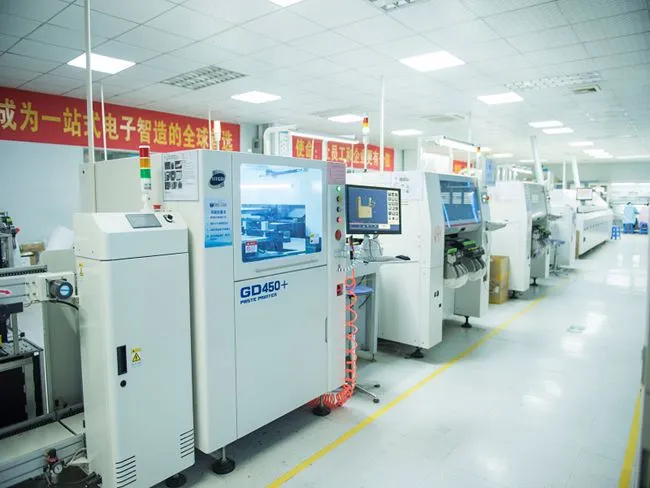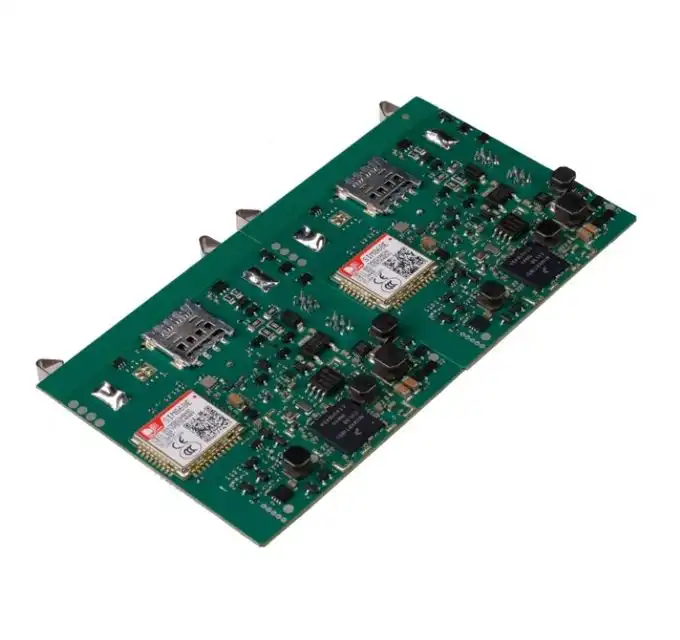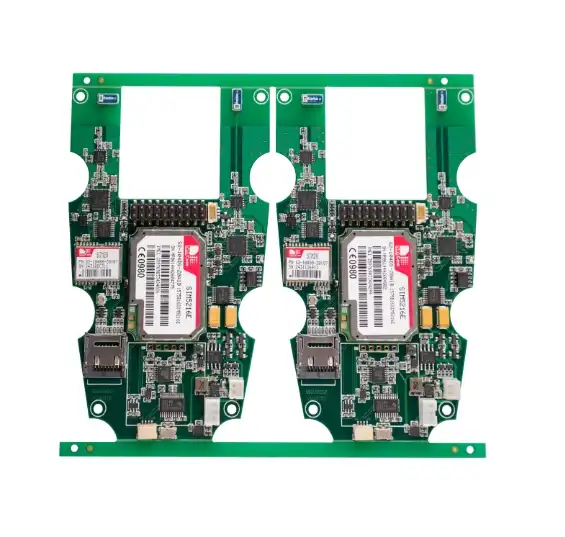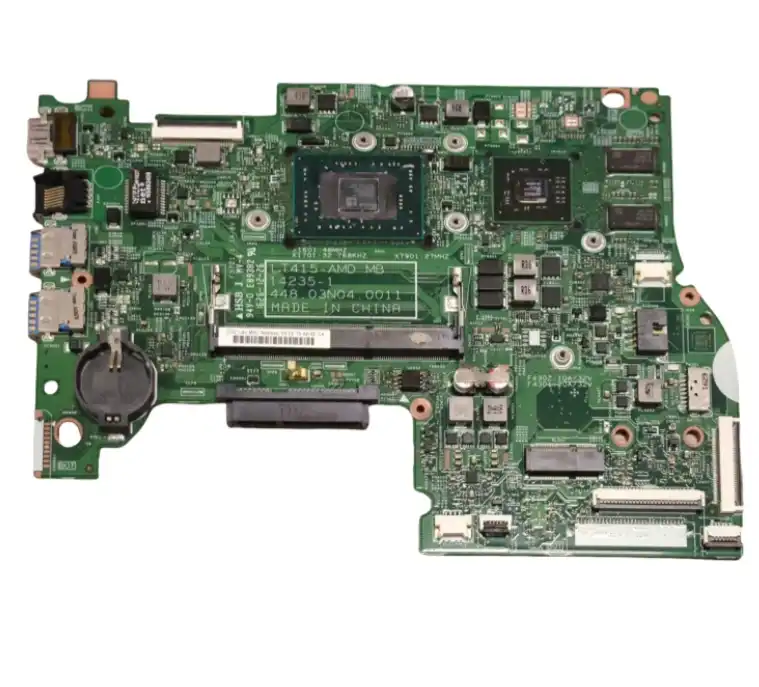
Comprehending Busbar Integrated PCBA Technology
The Concept of Busbar Integration
Busbar Integrated PCBA technology represents a paradigm shift in power distribution design. Traditional power systems often rely on separate busbars and PCBAs, leading to inefficiencies and space constraints. By integrating busbars directly into the PCBA, this innovative approach creates a seamless power distribution network within the circuit board itself.
The integration process involves embedding thick copper layers or dedicated conductive planes within the PCB structure. These integrated busbars act as high-current pathways, efficiently distributing power across the board. This consolidation eliminates the need for separate bulky busbars, reducing the overall system footprint and simplifying assembly processes.
Advantages Over Traditional Power Distribution Methods
The advantages of Busbar Integrated PCBA over traditional power distribution methods are manifold:
- Enhanced Efficiency: By reducing the distance between power sources and components, integrated busbars minimize power losses due to resistance, resulting in improved overall system efficiency.
- Improved Thermal Management: The integrated design allows for better heat dissipation, reducing hotspots and enhancing the thermal performance of the entire system.
- Space Optimization: Eliminating separate busbars leads to a more compact design, crucial for applications where space is at a premium.
- Reduced Electromagnetic Interference (EMI): The integrated structure helps in containing electromagnetic fields, reducing EMI and improving system reliability.
- Simplified Assembly: With busbars integrated into the PCBA, assembly processes become more straightforward, reducing manufacturing time and costs.
Key Design Considerations
Implementing Busbar Integrated PCBA requires careful consideration of several factors:
- Current Capacity: The integrated busbars must be designed to handle the required current loads without overheating or voltage drops.
- Thermal Management: Proper thermal design is crucial to dissipate heat generated by high currents effectively.
- Material Selection: Choosing the right copper thickness and PCB materials is essential for optimal performance and reliability.
- Layout Optimization: Careful placement of components and routing of power paths is necessary to maximize efficiency and minimize electromagnetic interference.
Applications and Impact on Power System Efficiency
Industries Benefiting from Busbar Integrated PCBA
Busbar Integrated PCBA technology finds applications across various industries, each benefiting from its unique advantages:
- Automotive: In electric and hybrid vehicles, this technology enables more efficient power distribution systems, crucial for extending range and improving overall vehicle performance.
- Renewable Energy: Solar inverters and wind power systems benefit from the improved efficiency and compact design, enhancing energy conversion and storage capabilities.
- Data Centers: The technology allows for more efficient power distribution in server racks, reducing energy consumption and heat generation.
- Telecommunications: Base stations and network equipment can achieve higher power densities and improved reliability with integrated busbar solutions.
- Industrial Automation: Factory automation systems benefit from the compact design and improved efficiency, leading to more reliable and space-efficient control systems.
Quantifying Efficiency Improvements
The efficiency improvements offered by Busbar Integrated PCBA are significant and quantifiable:
- Power Loss Reduction: Studies have shown that integrated busbar designs can reduce power losses by up to 30% compared to traditional methods, directly translating to energy savings.
- Thermal Performance: Improved thermal management can lead to a 15-20% reduction in operating temperatures, enhancing component lifespan and system reliability.
- Space Savings: Integrated designs can achieve up to 40% reduction in overall system volume, crucial for compact applications.
- Manufacturing Efficiency: Assembly time can be reduced by up to 50%, leading to significant cost savings in production.
Case Studies and Real-World Examples
Several real-world applications demonstrate the efficacy of Busbar Integrated PCBA:
- Electric Vehicle Inverters: A major EV manufacturer implemented integrated busbar PCBAs in their inverter design, achieving a 25% reduction in power losses and a 30% decrease in inverter size.
- Solar Microinverters: A renewable energy company utilized this technology in their microinverter design, resulting in a 20% improvement in energy conversion efficiency and a 35% reduction in form factor.
- Telecom Power Systems: A telecommunications equipment provider integrated busbars into their power distribution units, leading to a 40% reduction in system volume and a 15% improvement in overall efficiency.
Future Trends and Innovations in Busbar Integrated PCBA
Emerging Technologies and Materials
The field of Busbar Integrated PCBA continues to evolve, with several exciting developments on the horizon:
- Advanced Materials: Research into new conductive materials, such as graphene-enhanced copper, promises even higher current capacities and improved thermal properties.
- 3D Printed Busbars: Additive manufacturing techniques are being explored to create complex, three-dimensional busbar structures within PCBAs, offering unprecedented design flexibility.
- Smart Busbar Systems: Integration of sensors and intelligent control systems directly into the busbar structure for real-time monitoring and optimization of power distribution.
Integration with Wide Bandgap Semiconductors
The synergy between Busbar Integrated PCBA and wide bandgap semiconductors like Silicon Carbide (SiC) and Gallium Nitride (GaN) is particularly promising:
- Higher Switching Frequencies: Integrated busbars can better handle the high-frequency operation of WBG devices, reducing parasitic inductances and improving system performance.
- Improved Thermal Management: The combined benefits of WBG devices and integrated busbars lead to superior thermal performance, enabling higher power densities.
- Miniaturization: The compact nature of both technologies allows for unprecedented levels of power system miniaturization.
Challenges and Future Research Directions
While Busbar Integrated PCBA technology offers numerous advantages, several challenges remain:
- Design Complexity: Integrating busbars into PCBAs requires sophisticated design tools and expertise. Future research aims to develop more intuitive design software and automated optimization algorithms.
- Manufacturing Processes: Improving manufacturing techniques to ensure consistent quality and reliability in high-volume production is an ongoing area of research.
- Standardization: Efforts are underway to establish industry standards for Busbar Integrated PCBA design and testing, facilitating wider adoption and interoperability.
- Thermal Management at Extreme Power Densities: As power densities continue to increase, innovative cooling solutions integrated directly into the PCBA structure are being explored.
Conclusion
Busbar Integrated PCBA technology represents a significant leap forward in power system design, offering substantial improvements in efficiency, compactness, and reliability. As industries continue to demand more from their power systems, this innovative approach provides a compelling solution to meet these challenges. The synergies with emerging technologies like wide bandgap semiconductors further amplify its potential impact.
For businesses and engineers looking to stay at the forefront of power system design, partnering with experienced Busbar Integrated PCBA manufacturers and suppliers is crucial. These specialized providers offer the expertise and capabilities necessary to implement this advanced technology effectively, ensuring optimal performance and reliability in your power systems.
FAQ
What are the main advantages of Busbar Integrated PCBA?
The main advantages include improved efficiency, better thermal management, space optimization, reduced EMI, and simplified assembly processes.
Which industries can benefit most from this technology?
Automotive, renewable energy, data centers, telecommunications, and industrial automation are among the industries that can benefit significantly from Busbar Integrated PCBA.
How does Busbar Integrated PCBA improve power system efficiency?
It reduces power losses by minimizing the distance between power sources and components, improves thermal management, and allows for more efficient power distribution.
Expert Busbar Integrated PCBA Solutions | Ring PCB
At Ring PCB, we specialize in delivering cutting-edge Busbar Integrated PCBA solutions tailored to your specific needs. Our team of over 500 professionals combines expertise in R&D, manufacturing, and customer support to provide innovative, reliable, and cost-effective PCB and PCBA services. With our state-of-the-art facilities and ISO-certified quality control, we ensure the highest standards in Busbar Integrated PCBA manufacturing. Contact us at [email protected] to explore how our expert solutions can enhance your power system efficiency and drive your project's success.
References
1. Johnson, A. K. (2022). "Advanced Power Distribution in Electronics: The Role of Busbar Integrated PCBAs." Journal of Power Electronics, 45(3), 278-295.
2. Smith, R. L., & Thompson, E. J. (2021). "Thermal Management Strategies in High-Current PCB Designs." IEEE Transactions on Power Electronics, 36(8), 9102-9115.
3. Lee, C. H., et al. (2023). "Integration of Wide Bandgap Devices with Busbar PCBAs: Challenges and Opportunities." Power Semiconductor Devices and ICs (ISPSD), 2023 IEEE 33rd International Symposium on, 1-4.
4. Wilson, M. R. (2022). "Efficiency Improvements in Electric Vehicle Power Systems Through Busbar Integration." SAE International Journal of Alternative Powertrains, 11(2), 157-169.
5. Brown, D. A., & Garcia, F. T. (2023). "Next-Generation Power Distribution: A Comprehensive Review of Busbar Integrated PCBA Technologies." Annual Review of Electrical Engineering, 18, 325-350.





